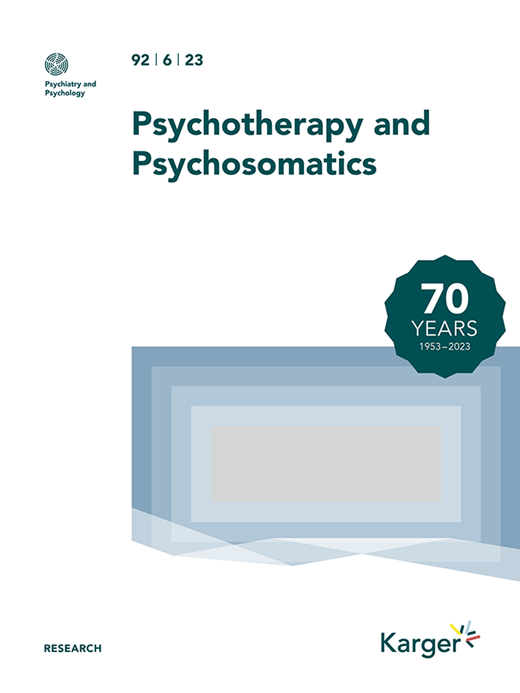Evaluation of a Smartphone App Intervention with Telephone Guidance as Transitional Support from Inpatient Treatment to Continuing Care for Individuals with Alcohol Use Disorder: Results from a Randomized Controlled Trial.
IF 17.4
1区 医学
Q1 PSYCHIATRY
引用次数: 0
Abstract
INTRODUCTION Relapse rates in individuals with alcohol use disorder (AUD) are particularly high following inpatient treatment. Innovative strategies should specifically target the transitional gap between completion of inpatient treatment and uptake of standard continuing care. This study aimed to determine whether Appstinence, a digital approach that combines a smartphone app intervention with adjunct telephone coaching, more markedly reduces the risk of relapse for 6 months after inpatient AUD treatment in comparison to a control group with access to standard continuing care. METHODS In this multicenter clinical trial, 356 participants were randomized to the intervention (n=175) or control group (n=181). Eligibility criteria included diagnosis of AUD, smartphone access, no acute suicidality, and no language or neurocognitive impairments. The primary outcome was risk of relapse within six months after randomization, as assessed with the Timeline-Follow-Back method. Secondary outcomes included uptake of standard continuing care, hazardous alcohol consumption, craving, depression and anxiety symptom severity, and well-being. RESULTS The intervention reduced the risk of relapse within six months as indicated by a log-rank test (HR 0.72, 95% CI 0.53-0.98, p=0.04) and Cox regression adjusted for baseline characteristics (HR 0.67, 95% CI 0.48-0.92, p=0.01). This effect increased when participants fully adhered to the intervention protocol (log-rank test: HR 0.61, 95% CI 0.39-0.94, p=0.02). No significant differences were observed in secondary outcomes. CONCLUSION Our findings provide supportive evidence for digital AUD transition treatment. Specifically, we found that, in comparison with access standard continuing care, the novel intervention more effectively reduced risk of relapse within six months following inpatient treatment.智能手机应用程序干预与电话指导作为酒精使用障碍患者从住院治疗到持续护理的过渡支持的评估:来自一项随机对照试验的结果
酒精使用障碍(AUD)患者在住院治疗后复发率特别高。创新策略应专门针对完成住院治疗和接受标准持续治疗之间的过渡差距。本研究旨在确定Appstinence,一种结合智能手机应用程序干预和辅助电话指导的数字方法,与接受标准持续治疗的对照组相比,是否能更显著地降低住院AUD治疗后6个月的复发风险。方法在本多中心临床试验中,356名受试者随机分为干预组(n=175)和对照组(n=181)。入选标准包括AUD诊断、智能手机接入、无急性自杀倾向、无语言或神经认知障碍。主要终点是随机分组后6个月内的复发风险,采用时间线-随访法进行评估。次要结局包括接受标准持续治疗、危险饮酒、渴望、抑郁和焦虑症状严重程度以及幸福感。结果经log-rank检验(HR 0.72, 95% CI 0.53-0.98, p=0.04)和Cox回归校正基线特征(HR 0.67, 95% CI 0.48-0.92, p=0.01),干预降低了6个月内的复发风险。当参与者完全遵守干预方案时,这种效果增加(log-rank检验:HR 0.61, 95% CI 0.39-0.94, p=0.02)。次要结局无显著差异。结论:我们的研究结果为数字化AUD转换治疗提供了支持性证据。具体来说,我们发现,与获得标准的持续治疗相比,新的干预措施更有效地降低了住院治疗后六个月内复发的风险。
本文章由计算机程序翻译,如有差异,请以英文原文为准。
求助全文
约1分钟内获得全文
求助全文
来源期刊

Psychotherapy and Psychosomatics
医学-精神病学
CiteScore
29.40
自引率
6.10%
发文量
46
期刊介绍:
Psychotherapy and Psychosomatics is a reputable journal that has been published since 1953. Over the years, it has gained recognition for its independence, originality, and methodological rigor. The journal has been at the forefront of research in psychosomatic medicine, psychotherapy research, and psychopharmacology, and has contributed to the development of new lines of research in these areas. It is now ranked among the world's most cited journals in the field.
As the official journal of the International College of Psychosomatic Medicine and the World Federation for Psychotherapy, Psychotherapy and Psychosomatics serves as a platform for discussing current and controversial issues and showcasing innovations in assessment and treatment. It offers a unique forum for cutting-edge thinking at the intersection of medical and behavioral sciences, catering to both practicing clinicians and researchers.
The journal is indexed in various databases and platforms such as PubMed, MEDLINE, Web of Science, Science Citation Index, Social Sciences Citation Index, Science Citation Index Expanded, BIOSIS Previews, Google Scholar, Academic Search, and Health Research Premium Collection, among others.
 求助内容:
求助内容: 应助结果提醒方式:
应助结果提醒方式:


